Sony VAIO VGN-TT11WN/B 11.1in Ultra-Portable Review
Sony VAIO VGN-TT11WN/B 11.1in Ultra-Portable
Can Sony surpass the TZ with its replacement, the VAIO TT? Andy finds out.
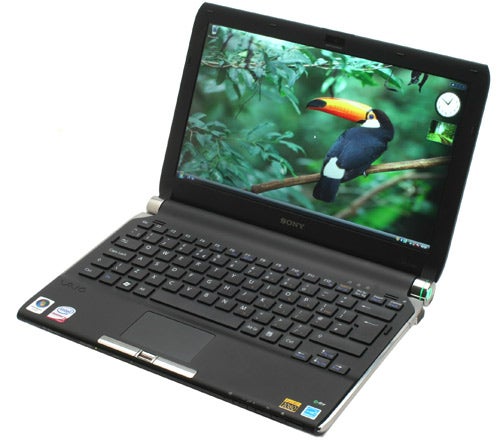
Verdict
Key Specifications
- Review Price: £1766.12
Despite Sony’s reputation in ultra-portable computing stretching back years for many the release of the VAIO TZ11 was the defining confirmation of that mastery. Not only was it effortlessly portable, sleek and alluringly attractive, it delivered a gorgeous screen, an integrated optical drive and epic battery life. It seemed, at the time at least, to be something approaching perfection.
Technology, however, doesn’t stand still. So while Sony sat back and watched the plaudits roll in, a few other companies began to plot a response. Apple brought out the MacBook Air, Toshiba the Portégé R500, Lenovo the ThinkPad X300 and more recently Samsung the confusingly named X360. So, despite none of the major challengers matching the TZ’s 11.1in form factor, all of a sudden there’s a lot more choice out there.
Enter the VAIO TT, Sony’s response to its ‘competition’ and the replacement for the much loved TZ. Right from the off it becomes obvious Sony has taken its ultra-portable range in a slightly different direction, too. Unlike the TZ, whose executive price was sprinkled with styling of a more consumerist nature, the TT seems more trenchantly aimed at executives. Our sample, the VGN-TT11WN, is finished entirely in matte black plastic save for the faux-chrome edges and glossy strip at the front and though there is a striking gold version, as well as red lid option, the feature set and emphasis screams business user rather than impressionable style icon.
And, frankly, this isn’t a bad thing. If anyone is going to pay for and appreciate the virtues of an ultra-portable like the TT, it’s an executive or successful entrepreneur; the sort of person that isn’t tied to the office but needs all the functionality of one. Unfortunately, having made this move, Sony has decided to take the mickey (we’d use a stronger word were we allowed) when it comes to pricing.
For sure, the T11WN is well featured, having integrated HSDPA, a high resolution screen, 4GBs of RAM, TPM security, Draft-N Wi-Fi, Gigabit Ethernet and Bluetooth, but you can pick up a ThinkPad X301 with all these features, a three year warranty (as opposed to one year) and a 128GB SSD for the same money. Our TT, in the meantime, must suffice with a somewhat sluggish 160GB 5,400rpm shock protected mechanical drive. And, as a quick glance at our benchmarks will reveal, a decent SSD has a pretty marked impression on performance so the benefits in a low-power machine like this are huge.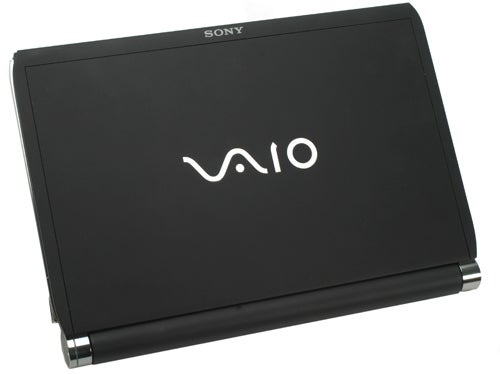
Still, before we throw the baby out with the bath water, let’s not lose sight of the fact that the TT is still appreciably smaller and therefore more portable than the X300, X301 or any other thin & light 13 inch machine. Measuring just 279mm across and 199.8mm deep, it’ll comfortably fit in any travel bag and leave plenty of space to spare. It’s not necessarily the lightest machine, though. At 1.32kg it’s not heavy per se, but it does weigh more than the 1.19kg of the TZ, while the Toshiba Protégé R600 is in another league of portability at around 800g.
As a result of this slight change of focus we must admit the TT doesn’t excite us in quite the same way the TZ did. Call us fickle if you like, but despite its sleek lines, impossibly thin lid and compact carbon fibre chassis the TT does lack the ‘wow factor’ that the TZ had. In fact we’d go so far as to say if you’ve already got a TZ and were thinking of upgrading, the TT won’t knock you down with its superiority. Undeniably there’s an element of familiarity in this reaction, but from a design standpoint at least the TT isn’t the advance some might have hoped.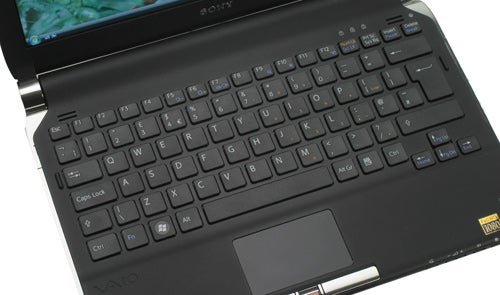
Another familiar element is the keyboard. Like the TZ’s of old and the VAIO Z11WN we looked at not all that long ago, the TT employs the usual isolated style keyboard. Unlike the Z Series, however, the TT’s keys retain the slightly shallow feel that’s always characterised isolated keyboards.
This does take a little getting used to since there’s a slight lack of that positive click when typing, but the keyboard layout can’t be faulted. Everything is in the right place and while the keys themselves aren’t quite full-size they’re close enough to be perfectly comfortable for regular typing duties. We also like how the palm rest area is raised slightly above the keyboard, creating a more comfortable typing position.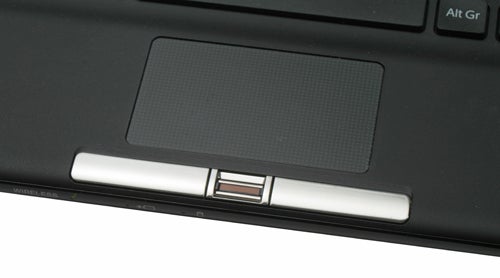
Below the keyboard, of course, is the touchpad. It’s well proportioned, never getting in the way of typing, while it’s two faux-chrome buttons are large and have a nice positive action. Between the two is a fingerprint reader and this is matched with TPM 1.2 (Trusted Platform Module) adding secure encryption and authentication to protect your precious data.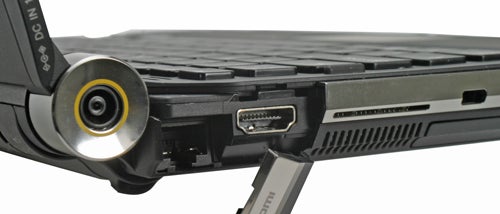
Connectivity, meanwhile, isn’t prodigious but covers most of the bases a business user will demand. Behind the flap on the left there’s an HDMI output and an Ethernet port and this is followed by a lock slot, a 34mm ExpressCard slot, a mini-FireWire port, the two sole USB ports and the headphone and microphone jacks. 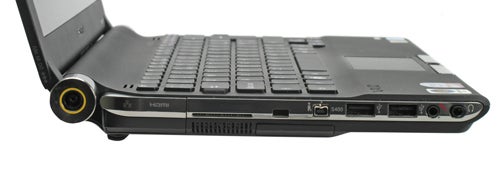
Up front there’s the usual combination of an SD card reader and a MagicGate Pro slot for Sony’s propriety card formats. Next to these is a quick and useful wireless radio switch and following on the opposite are volume control buttons, a mute button, one programmable shortcut button and an Eject button for the optical drive.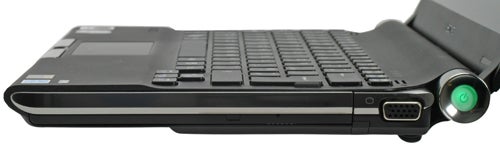
It’s just as well there is one, too, since the button on the drive itself sits flush and is very small, making it difficult to operate. This does ensure it won’t be accidentally activated, though, so should be regarded as a feature as opposed to a problem. Next to the optical drive sits the only other output, a VGA port for analogue connection to a monitor or TV.
Having gently bemoaned the relatively conservative design, internally the TT’s superiority over the TZ can’t be doubted. This isn’t exactly difficult, though, given that even earlier this year when we reviewed the TZ31MN it was still using what is now a two generation old chipset. As a consequence its integrated graphics was pretty lousy, something that’s somewhat improved upon with Intel’s GMA X4500M HD. A powerhouse it isn’t but one thing it can do is offset video processing, a feature that allows Sony to make a Blu-ray writer drive an option through its ‘VAIO by you’ configuration tool. Just budget a piffling £330 for that upgrade.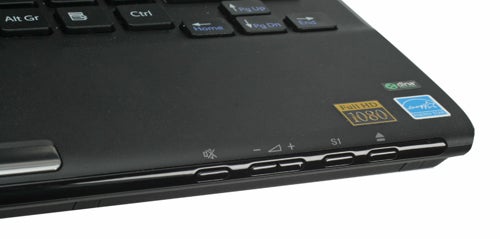
Since we’re on the topic of the ‘VAIO by you’ service, we couldn’t help noticing yet more evidence of Sony’s bottom line maximisation. For instance, upgrading a hard drive from 120GB to 160GB costs a hilarious £110; a fact that, when announced in the office, almost caused Riyad to choke on his lunch. Similarly, an upgrade from 2GB to 3GB of RAM will cost £80 and 4GB a further £110 on top of that.
Joining the move to the Centrino 2 chipset are new processors, the 1.2GHz SU9300 and the 1.4GHz SU9400. Our model has the former of the two while the latter is a relatively modest, by the above standards at least, £50 upgrade. Both are what Intel terms ultra-low voltage processors, feature an 800MHz front side bus, 3MB L2 Cache and operate within a 10W thermal envelope. This might not mean blistering performance, but you can still use applications like Adobe Photoshop within reason and multi-tasking office applications don’t pose a problem.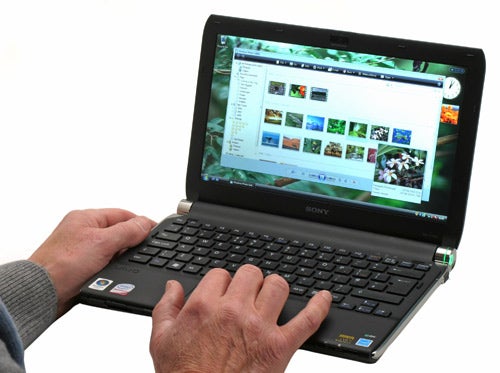
This said, returning to an earlier theme, a comparison between this spec with a 160GB mechanical hard drive and the Samsung X360 with an identical processor but a 128GB SSD shows there’s quite a gulf in performance. In PCMark Vantage, which does typically favour SSDs, the Samsung produces a 40 per cent higher overall score and an even heftier 50 per cent in the Productivity segment.
Accepting that PCMark is slightly biased in this regard, however, our more CPU limited in-house benchmarks also show significant differences in performance. In the batch image editing segment the X360 was around 18 per cent faster, while the even more CPU limited video rendering test showed an eight per cent difference in favour of the Samsung.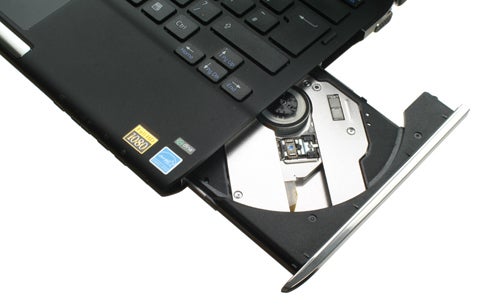
Now this isn’t to say the TT in this configuration is woefully slow, it isn’t, but side-by-side the gulf in performance is quite marked; both in synthetic tests and real-world use. In general use an SSD equipped machine delivers a level of responsiveness that can’t be matched, not to mention the improvement in boot-up times and battery life an SSD will provide.
Having dealt with raw application performance, it’s about time we look at arguably the more important metric for an ultra-portable: battery life. Here the TT predictably throws up some impressive sounding numbers. In the Productivity suite of MobileMark 2007 it managed five and a half hours, increasing to five hours and 50 minutes in the lower intensity Reader segment and back down to two hours and 45 minutes of DVD playback.
All of which, in isolation, sounds very good and for the most is very good, but a comparison against the TZ31MN we reviewed earlier this year doesn’t reflect so favourably. Incredibly, in the Productivity segment it managed over an hour longer, ending after six hours and 36 minutes, while in the Reader test the difference was an even larger one hour and 38 minutes for a total of seven hours and 29 minutes. Unsurprisingly this trend is continued in the DVD test as well, with an 80 minutes difference in favour of the TZ31MN.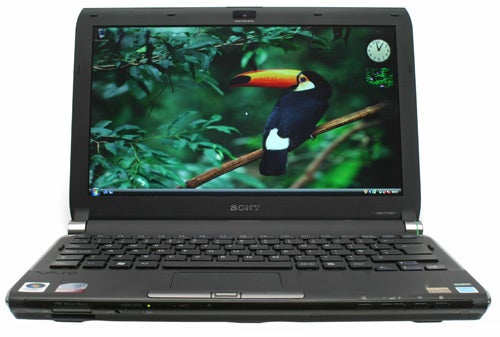
This is largely down to the fact that the TT carries a lower capacity battery; a six-cell 5,400mAh one compared to the 5,800mAh of the TZ Series. This might not sound like a great deal, but it clearly makes a difference since the TT is resoundingly beaten by its predecessor. One can only assume Sony did this to keep the weight of the machine down, something that’s been made necessary by the slightly chunkier construction of the TT. Of course, this does mean that the TT does seem slightly sturdier, but we wouldn’t say drastically so and the trade-off is significant enough to raise an eye-brow.
One thing certainly hasn’t degraded, however, is the 1,366 x 768 16:9 aspect screen. This was always the crowning glory of the TZ and it remains so on the TT. In fact, thanks to Sony’s new screen coating, it manages to retain the stunning colour production and black levels without resorting to a reflective glossy finish. It’s the epitome of a win-win scenario and things are rounded off nicely by some incredibly wide viewing angles.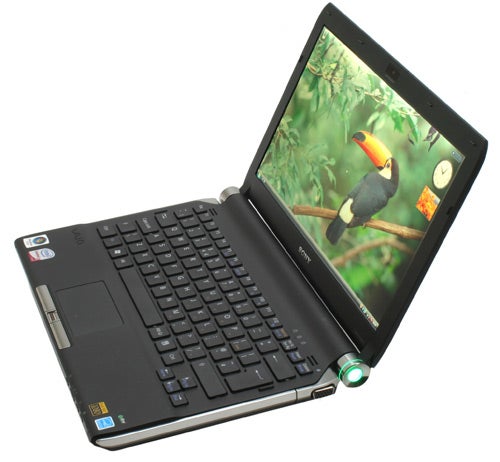
However, despite this visual splendour, the VAIO TT leaves us ever so slightly crestfallen. That it’s still the best 11.1in notebook money can buy is without doubt, but this is largely because it’s the only one worth mentioning. It’s a fact that clearly isn’t lost on Sony and we’d wager is the source of its less than competitive pricing. More worrying, however, is the fact that despite being the new model, the replacement to the TZ, the improvement between the two isn’t that clear. Yes, it is a bit sturdier than the TZ was, but this has come at the cost of inferior battery life, a heavier chassis and arguably a less attractive whole.
Verdict
If you need an ultra-portable notebook and find the 13.3in alternatives, like the ThinkPad X300, too much to handle the Sony VAIO TT is still the best option out there. Yet, despite its manifest qualities, it’s an option that comes at too high a cost; delivering mediocre performance compared to its price point. Thus, unless Sony makes its pricing a little more realistic or money is simply no object for you, we couldn’t recommend it without pause.
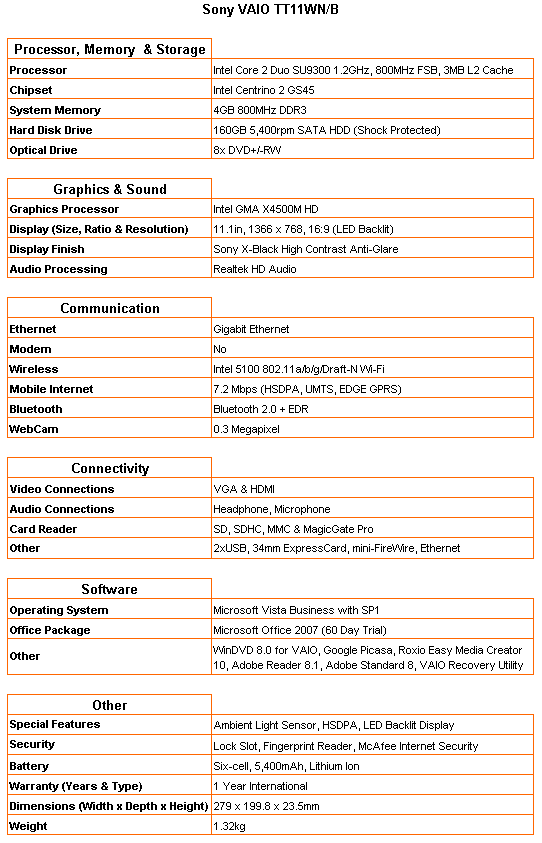
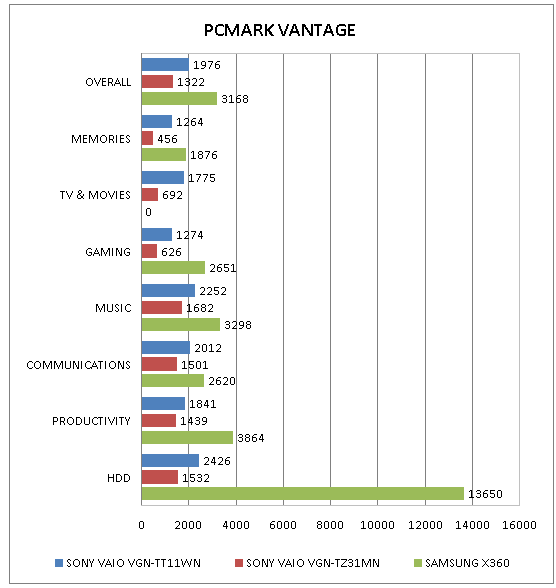
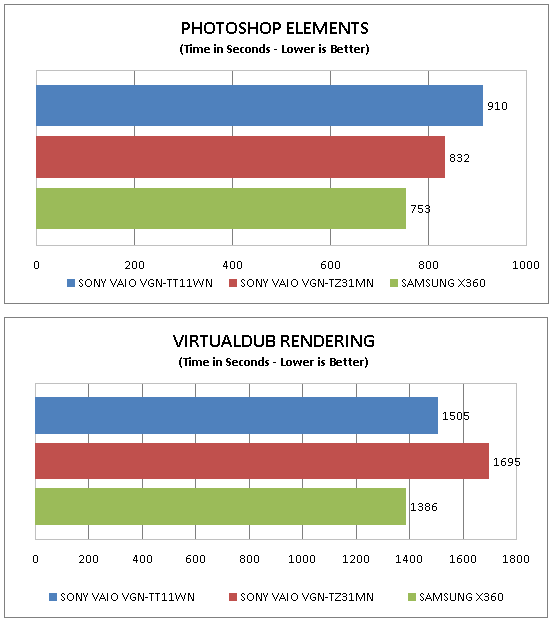
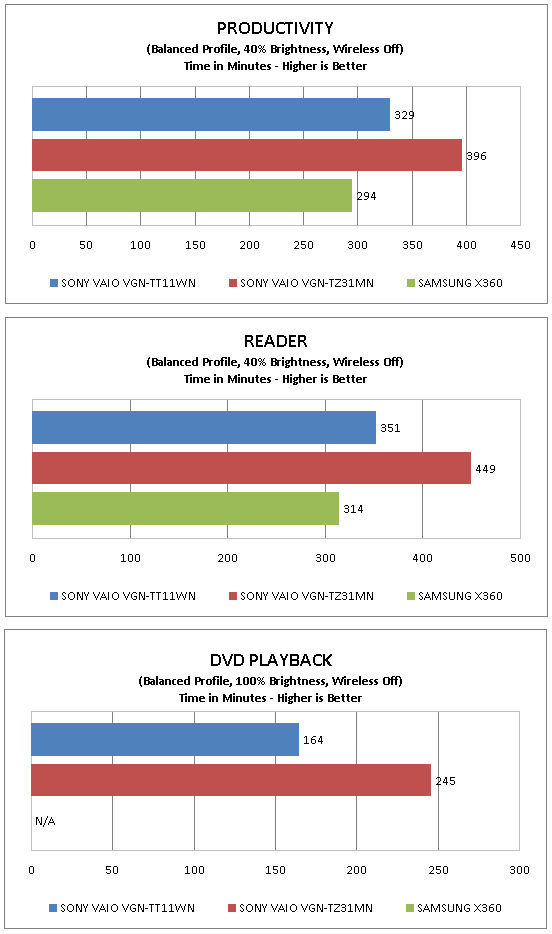
How we test laptops
Unlike other sites, we test every laptop we review thoroughly over an extended period of time. We use industry standard tests to compare features properly. We’ll always tell you what we find. We never, ever, accept money to review a product.
Trusted Score
Score in detail
-
Performance 7
-
Design 8
-
Value 6
-
Features 9

